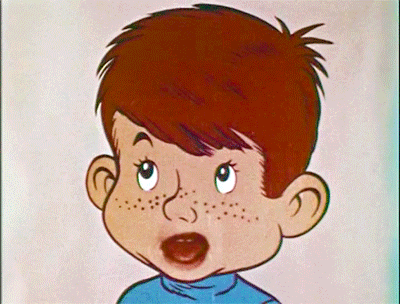
Cambria Productions: On the Lips of Syncro-Vox
by Josh Measimer
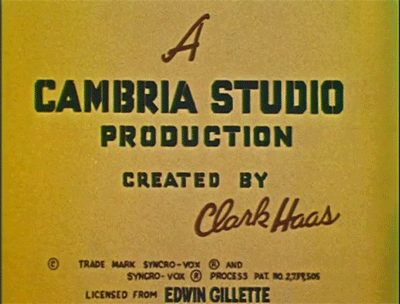
Cambria Productions, founded in West Hollywood in 1958, was largely a collaboration between cartoonist Clark Haas, who had been an assistant for a few series at King Features Syndicate as well as the creator of his own series Sunnyside, and cameraman Edwin Gillette, who created the Syncro-Vox animation technique.
Syncro-Vox was developed in 1952, intended to cut down the costs of animating mouth movements, specifically on animals in TV commercials. What Syncro-Vox basically did was that the lips of a voice actor would be filmed as they read their lines, and then take the footage of their lips would be edited onto an image to visually simulate speech.
The average cost of animating mouth movements onto the commercial animals prior to this had been approximately $11,000 per minute. Using his Syncro-Vox technique, Edwin Gillette dramatically decreased the cost to just $500 per minute. In 1956, Gillette would gain a patent for his invention, and in 1958, he was contacted by Clark Haas about joining a new animation studio he was starting up called Cambria Productions.
The use of Syncro-Vox was Cambria’s biggest claim to fame (or infamy), though they also used other techniques to lower costs, including shaking the camera on a static frame and splicing in live-action footage (such as of a waving flag) to simulate more movement than there was in reality.
Clutch Cargo: The Low-Budget Cartoon Phenomenon
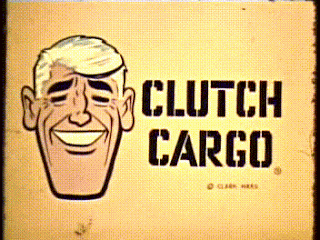
Clutch Cargo (1959–60)
The first series produced by Cambria starred Clutch Cargo (voiced by TV and radio announcer Richard Cotting), a tough adventurer with handsome looks who’s regularly sent off on dangerous missions across the globe. Clutch typically flew around in an airplane, inspired by creator Clark Haas’s time as an early jet pilot. With him are his loyal red-headed sidekick Spinner (voiced by Margaret Kerry, the real-life model for Tinker Bell in Disney’s Peter Pan) and their dog Paddlefoot (voiced by actor Hal Smith in one of his earliest roles). Sometimes the team was also helped by their ally Swampy (also voiced by Hal Smith).
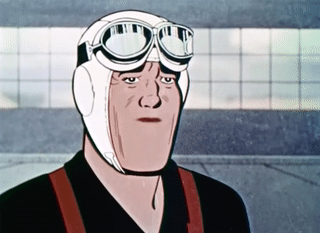
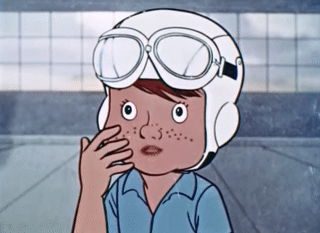
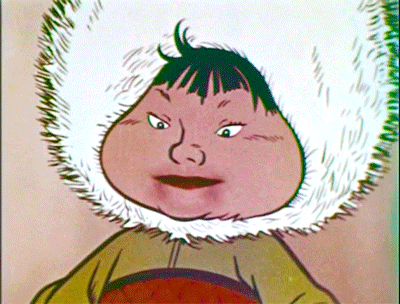
Clutch Cargo, for all intents and purposes, was the first of what modern cartoon viewers would call an “action” cartoon—excepting perhaps the NBC Tele Comics series years earlier. While serialized cartoons on TV weren’t a new thing (going as far back as the first TV cartoon, Crusader Rabbit), unlike those series which were comedic at heart, Clutch Cargo drew more directly from the film serials of old by actually taking itself seriously. The heroes often found themselves in real danger against villains who meant them harm. Clutch and Spinner were forced to overcome these nemeses through ingenuity and teamwork. Future action cartoons would follow in its footsteps, bringing more serious storytelling to animation.

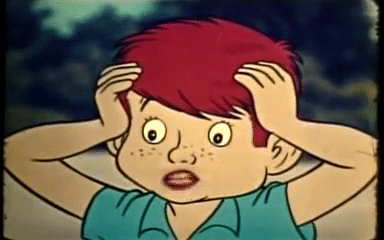
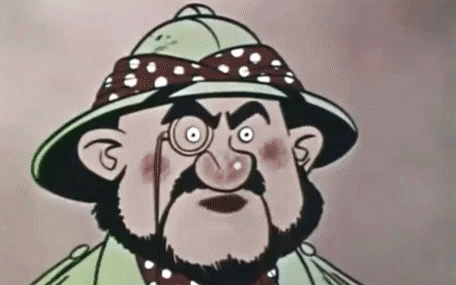
Clutch Cargo made its debut on March 9, 1959, running in weekday syndication on local children’s shows. Each of its 52 adventures consisted of five 5-minute shorts (260 total) which ran Monday through Friday, and in some markets would be rerun all together over the weekend as a half-hour show. While even back when it premiered it was ridiculed for its animation, Clutch Cargo gained a solid following for its storytelling for those who could see past the lips.
Clutch Cargo: The Haunted Castle
CLUTCH CARGO: Mystery in the Northwoods
CLUTCH CARGO: Big X

Space Angel (1962–64)
Space Angel was Cambria’s second series, created by Dick Darley (who directed the early ’50s sci-fi TV show Space Patrol) and animated by former DC Comics artist Alex Toth. Centered around the eyepatch-wearing astronaut Scott McCloud (voiced by Ned Lefebver), he would don his helmet take on the identity of the hero Space Angel when the day needed saving.


Employed by the Earth Bureau of Investigation, he, along with the mechanic Taurus and navigator Crystal (voiced by Hal Smith and Margaret Kerry respectively), made up the Bureau’s Interplanetary Space Force operating aboard the spaceship Starduster. The most frequent alien force they faced were the Anthenians, a race of space-faring aliens with a society nearly identical to that of ancient Rome, frequently launching attacks to conquer other planets and enslave the inhabitants. There was also Queen Zora; physically resembling Nefertiti, she’d constantly try to create new weapons to terrorize the galaxy, as well as directly target the Interplanetary Space Force.

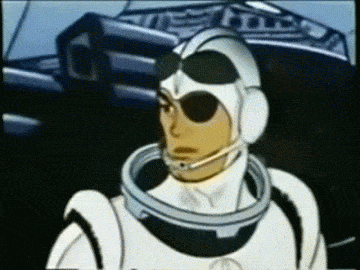
Space Angel, in certain ways, may have inspired elements of later, more well-known science fiction series. For example, in the “Space Hijackers” story of Space Angel, there is a docking scene that mirrors the famous docking sequence from 2001: A Space Odyssey, despite Space Angel premiering a full seven years before 2001 was released.
Space Angel: INCIDENT OF THE LOUD PLANET
Space Angel: VISITORS FROM OUTER SPACE
Space Angel: COSMIC COMBAT
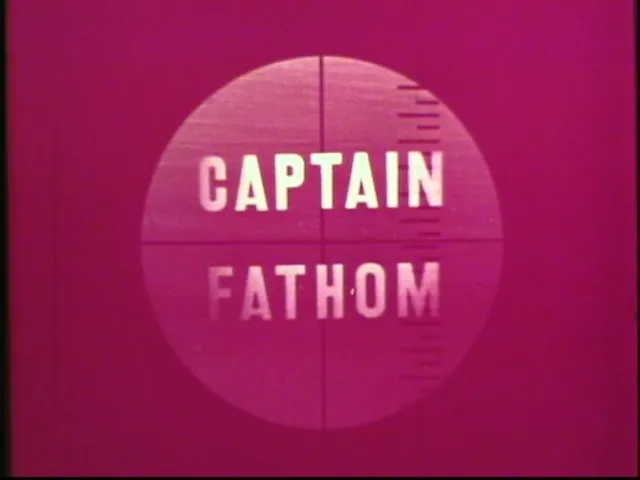
Captain Fathom (1965)
The last in the trilogy of Syncro-Vox series was Captain Fathom, beginning in 1965 and lasting a mere 17 stories (or 85 five-minute episodes). The series focused on Bill Fathom (voiced by artist Warren Tufts), the captain of the submarine Argonaut who’d go on various adventures with his crew. Like the previous series, the designs and animation were done by Alex Toth.


This series is not too fondly remembered (or remembered at all for that matter), and for good reason. By this time, the standards of animation on television were a bit higher than they were six years earlier when Clutch Cargo premiered.

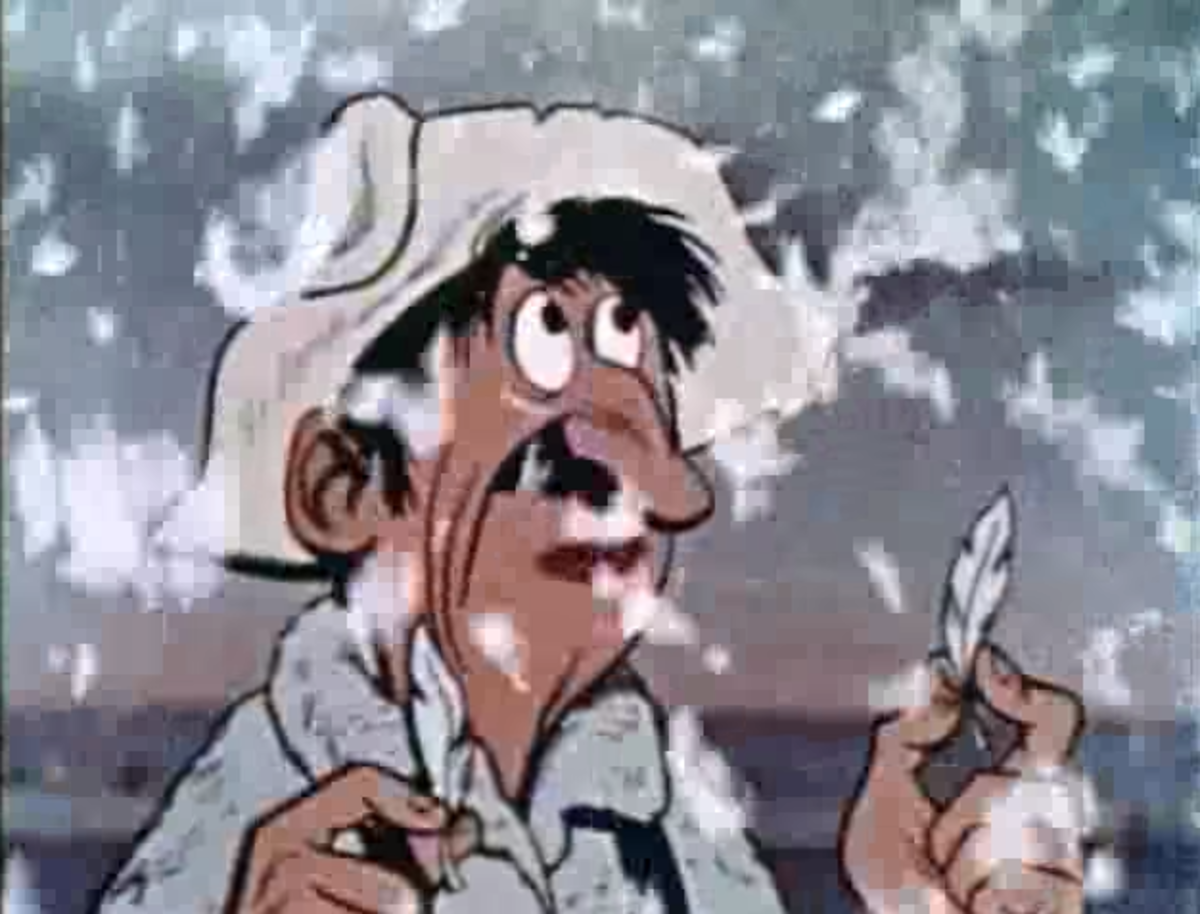
Audiences just couldn’t see past the unsettling lips and bare minimum animation (as Haas once said, he didn’t consider his shows “cartoons” but rather “motorized movement”), especially when there were better options from studios like Hanna-Barbera (who had no less than six shows in production in 1965) and Total Television Productions (the studio behind shows like Tennessee Tuxedo). Cambria Productions was quickly falling into irrelevancy.
Captain Fathom: Voyage to the Stone Age
Captain Fathom:Pisastros Private War
Captain Fathom: Eye of the Mountain!
Moon Mullins: failed TV pilot excerpt
In the end, despite their efforts to stay alive, Cambria Productions quietly closed up shop by the end of the ’60s, remembered primarily as a relic of an odd time in television animation. Clutch Cargo continued to play off-and-on in syndication into the ’90s, seeing airplay on networks like Comedy Central’s predecessor, The Comedy Channel.
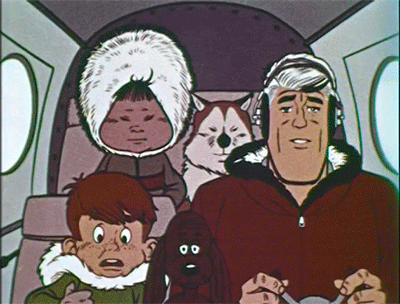
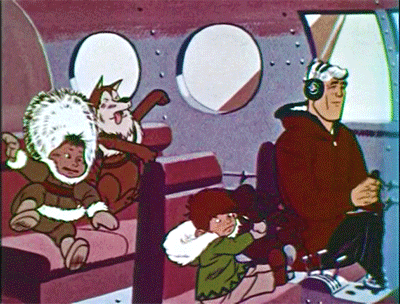
In fact, Clutch Cargo was forever immortalized in Pulp Fiction, just before Christopher Walken’s infamous watch speech. A young Butch (Bruce Willis’ character) is sitting in front of the TV when a weird looking cartoon character says, “Him think totem pole alive!” Space Angel and Captain Fathom, however, have disappeared from the collective public consciousness, only seeing the light of day as dollar bin DVDs.
The Making of Clutch Cargo
In Her Own Words: Margaret Kerry and Cambria Productions
from Cartoon Research
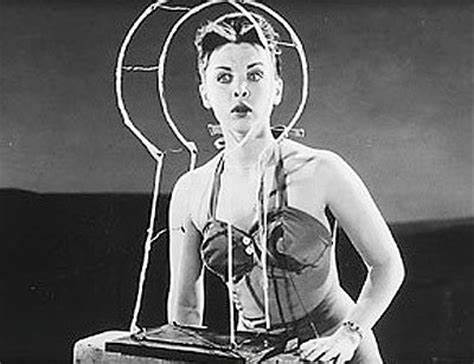
Jim Korkis: So why was the studio called Cambria?
Margaret Kerry: That was the name of Richard’s (her husband producer Dick Brown) A.P.A. ship when he was in the Coast Guard during World War II. He was stationed on the Pacific Coast. At one time he was patrolling the beach at Bodega Bay with a watchdog. We all tried to convince him to name the studio after himself but he was just so stubborn. I still think it was a big mistake.
JK: I found an article in a trade paper that stated that in 1965 Cambria was going to take Hanna-Barbera to court for $1,050,000, claiming the Jonny Quest series “uses, copies and appropriates substantial parts and portions of Cambria’s ‘Clutch Cargo’ and its pilot film, ‘Captain Fathom,’ including their principal cartoon characters.”
MK: No, we never sued. We never had the money. We wanted to sue. We were developing this action series with this young boy with red hair. Kay Wright was working with us at the time and he was working at Hanna-Barbera and he told them about the project and the next thing we knew they had hired some of our artists and took some of our concept art. You know that they were sometimes referred to as “Heist and Borrow” in the business.
We didn’t have the money to do the project so I doubt we sued. We were syndicated so we were always operating in deficit. People forget we were the first studio to do animation on television with human characters rather than squashed cats and mice.
JK: I know you announced many different animated projects that never got made like one with actor Cliff Arquette playing his “Charley Weaver” character in 1965.
MK: That was called “Get Cracken!” Cracken was the name of the mayor of this small rural town like Weaver’s Mount Idy but he was never where he was supposed to be so when something went wrong people would shout “Get Cracken!” Joe Cutter and Dave Detiege scripted the pilot and Clark Haas did the art direction. Charlie Weaver was going to narrate the thing. I still have a piece of artwork for the Weaver character design.
JK: And then Golden Eagle in 1967.
MK: How do you know all these things? That was about this young blonde World War I pilot. Again, it would be five minute segments but this time we were not going to use Synchro-Vox. We had a deal in place with Trans-Lux. My kids were playing with a Ouija board at the time and it said we would never start production on it and we didn’t.
Ed Gillette had these eight foot glass platens that moved by motors so the clouds could go one way and the planes the other. We were over on Melrose when we were working on that. He didn’t feel it was steady enough so he drilled down to anchor the device and hit the aquifer and gallons of water gushed up and it took two and half days to cap it.
JK: Any other oddball projects?
MK: I wrote a script called “The Company We Keep” about life in an animation studio and then another company produced “The Duck Factory” that was so similar. We did some animation of a wiseacre football called Freddy the Football voiced by Hal Smith for some Superbowl and we still own the rights to that character. We had a contract with The Human Fly, the Canadian stuntman who was briefly popular at the time. We were also pitching a Laurel and Hardy show and some other comedy team I can’t remember now.
We also did a pilot based on the comic strip “Moon Mullins”.
JK: Didn’t you work on a public service spot?
MK: That’s right. It was a fifteen minute animated film for the state of California on earthquake preparedness. I saw they were offering a grant and I figured I had been in an earthquake so I submitted and we got the job. My son came up with the name “A Quake…Don’t Let It Shake You”.
I haven’t seen it since. I wrote the script. Kay Wright did some work on it. Later the local CBS television station wanted us to do something similar for them.
JK: Of course, everyone wants to know about Clutch Cargo.
MK: We had a budget of only $3,600 for each five minute episode. Here’s something interesting. Dick Cotting who did the voice of Clutch could not say “Whew!” He would struggle with it and I can’t even imitate how it would come out so Hal Smith stepped in and would do it.
For one episode, Hal and I did eight different characters. Things were so tight money-wise that Hal and I stood at the same microphone.
I never got paid for any of my work on Clutch Cargo. My husband just assumed it was the family business and I should do it. I did get paid for Space Angel and Captain Fathom.
My husband had a falling out with Clark Haas and there was bad blood but I never knew what it was all about because he never said. I think Haas’ son took some Clutch Cargo artwork to Mike Van Eaton at his gallery and told him the story but I never heard it.
*
p.s. Hey. ** Misanthrope, I’ll try to get a glimpse. I think we might take weekends off, I’m not sure yet. Excellent outcome with your doc today, I guess it goes without saying. ** David Ehrenstein, She’s definitely among the great French actors ever, and such a resume. ** Tosh Berman, Hi. Wow, I don’t remember you telling me that Seyrig was your neighbor for a bit. That’s crazy! Even if your memory can’t illustrate it. Wow. ** _Black_Acrylic, Cool, happy she caught your eye, etc. ** bruno msmsmsm, Hi, welcome! Good to meet you, and thanks a lot. Yeah, ‘Dielman’ is unimpeachable. How and who are you? ** Jeff J, Hi, Jeff. Sight for sore eyes. Literally sore eyes, what with the editing. We’ve jumped into the editing, but Zooming would be good. Let’s find a mutual window. Weekends should be somewhat free if not totally. Amazing about the Bookworm book. I didn’t know about that. I wonder if that’s the same book that McSweeneys was supposed to publish years ago. I saw your email, and, yes, of course, it would totally amazing to have that post. Yes, please. Obviously happy the surgery seems to have righted your elbow. Nice festival there. Radigue was actually there in person? I’m going to see Sparks in a couple of weeks, but I think that’s all there is gig-wise for me at the moment. Although Nuit Blanche is on Saturday and a Ukrainian experimental electronic label is doing some big free sound/projection shebang at Gaite Lyrique, so I’ll probably wander into that. You’re into revising the trilogy now? That’s great! So you made a lot of progress during the residency? I’m good, very headlong into the film/editing, which is looking so incredible so far. In my little spare time I’m still fiddling with that possible small book of short, weird fiction things from the past ten years. It’s looking a little more probable at the moment, Great to see you, pal! ** Nick., Hi. I’m trying to imagine what a cute graveyard would look like. I keep ‘seeing’ something Japanese. Uh, for the most part I always did journalism to make extra money, but that was back when magazines and so on actually paid decent money, which doesn’t seem to be the case now. Otherwise, hm, I don’t know, something that requires physical input or your presence but leaves your mind free to stay on the art/writing/etc. thinking track, whatever that would be? For me, writing is my only real talent, so my extra gigs have pretty much always leeched off of my writing in some way. Fun story … uh, I just found an escort for an upcoming post whose offered service is to blow his nose in men’s handkerchiefs or mouths or cupped hands. That seemed kind of fun? ** Okay. Some of the credit and/or blame for today’s post goes to d.l. Jamie who inspired it. Thanks, Jamie, and see you all tomorrow.




 Now available in North America
Now available in North America 
Clutch Cargo used to Freak Me Out!
Dennis, Well, I was completely unaware of this. No surprise there, right?
Ah, thanks. Yeah, this potential hernia could be in my head. Who knows? I hope so. I don’t think so, but I hope so. Hell, maybe it’s just something with the mesh or stitches or something. I’ll find out. But yeah, thanks for the good wishes and vibes.
I was looking forward to seeing Holger play today but his opponent withdrew so he got a walkover win. You’re probably aware of his opponent, Gael Monfils. Great French player who’s playing probably his last season. He won a 4+ hour five-setter the other night where he was cramping like crazy, so I guess he couldn’t go any further. Monfils was one of those guys with worlds of talent who just didn’t live up to his potential/expectations. Like, you’d watch him and be like, how can anyone beat this guy? And then he’d lose to somebody ranked 100 spots lower than him. A real head-scratcher. But a lovely guy nonetheless.
Now I’m just waiting to see Taylor Fritz. Jannik Sinner is playing right now. You might like him. He’s an interesting guy. Extremely polite, kinda cute, but very intense and extremely talented. He beat Alcaraz earlier this year.
We would never have any kind of equivalent to Clutch Cargo here in the UK. A definite shame, as I could see myself getting quite into this given the right circumstances.
Have been getting into the paintings of Caravaggio again recently, and the DVD of the Derek Jarman biopic is on its way. Would there be any definitive biography that you might be aware of? I remember seeing David with the Head of Goliath at the Galleria Borghese in Rome many years ago, and it’s an image that has always stayed with me.
Dear Ray Davies–the figures in Space Angel have very shapely butts. Last nite I texted you a flyer from 198X: Dennis Cooper reading My Mark, with my scribbled memories fr thoze daze. Do you recall that NYC performance or surrounding events? Its apropos of nothing except I continue to discover such time portals in the Skelley “Archives.” Hope the editing is going swimingly! Take breaks to rest yr eyes. luv…. Dave Davies.
OMG! I love Clutch Cargo! Syncro vox is so weird and oddly sexual in a glory-hole sense. I work with an artist here in LA, Trulee Hall, who has experimented with this technique https://www.truleehall.com/ Her work is pretty rad!
Seyrig is intriguing. I watched Pull My Daisy. I was way into the Beats when I was a teenager. I had an english teacher in high school who turned me on to them. I saw Ginsberg read and met him a couple of times, and even contemplated going to Naropa for a while. I’ve recently seen a few films that are voice-over only. VO often seems like a fix to story holes, but it’s interesting when it becomes primary. The brain has to do some gymnastics to reconcile the visual and spoken narrative.
I’ve been looking at recent queer zines. If tapes and vinyl can make a comeback, why not zines? I can’t help thinking that social media must be getting stale for young people today. Social media kind of castrates underground culture, or at least truncates the gestation of underground cultures. It “monetizes” the quick connection of like-minded people, but what is lost is the prolonged, profitless, interaction of limited groups of disparate people. This is just my perception, and perhaps it’s romantic and nostalgic. I’m sure there a bunch of kids out there right now doing something that will undercut our current corporate robot overlords – hahaha!
Today’s subject matter for your blog brings up memories that disappeared but now come back with great intensity. Excuse me, but I have been reading Proust! Still, and if I’m not mistaken, shows like “Johnny Quest” were shown in the evenings – like 7:30 PM on a Thursday or Friday. Clutch was also shown later in the evening as well. Maybe ABC stations? I was attracted to these cartoons because they were like your comic book moving. I was attracted to Clutch and the others due to their drawings/art. Those early days of TV animation is interesting, including the Puppet Thunderbirds.
Hey Dennis,
I’m happy to shoulder some of the blame for today’s post! I love it, thanks. Syncro-Vox is always just ever so slightly off, eh? Like the mouths look oddly puckered or at the wrong angle to the rest of the face or just slightly the wrong size, and there’s that disparity between the mouth and the eyes. I bet something good could be done with the technique though, capitalising on its quirks. There were some UK versions of this, but the nothing that sticks in my memory.
How are you and how’s the editing going? I was happy and excited to read that you’d had a good start and I hope it’s keeping up. How long do you have to do it?
I’m trying to write an essay on imaginary horror films, but I’ve never written an essay before in my life and am finding it a struggle.
Bonne journée!
Quasimoronic love,
Jamie
My psychiatrist dropped me as a patient without telling me. I’ve had an extremely stressful day dealing with this. I should be referred to a new one in a few weeks, but it’s one of those days where you just wanna scream “Fuck this.”
To pick up from what Mark said, I too have wondered if print-only zines will make a comeback. The existence of Factsheet Five and the fact that chains like Tower would distribute queer zines and riot grrrl zines nationally made for a far more congenial climate. I’ve also thought about the difference between a real subculture and an online aesthetic. But I have a hard time seeing something like the riot grrrl movement emerging and making an impact now without being expressed through TikToks and podcasts rather than zines and music, and that would wind up changing it.
Ha, I didn’t know this had a name. I remember seeing the effect as a kid and thinking it looked cheap. (I was an obnoxious demanding kid.)
Saw Drugstore Cowboy for the first time since it came out. I think it holds up pretty well, though I still think the movie breaks when Burroughs appears on-screen.
Bill
hey dennis how are you? i’m new here but love your work. cheers from the middle east lol